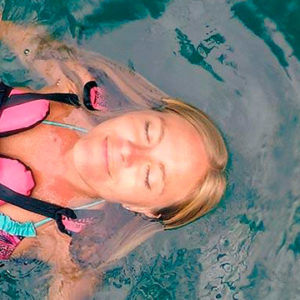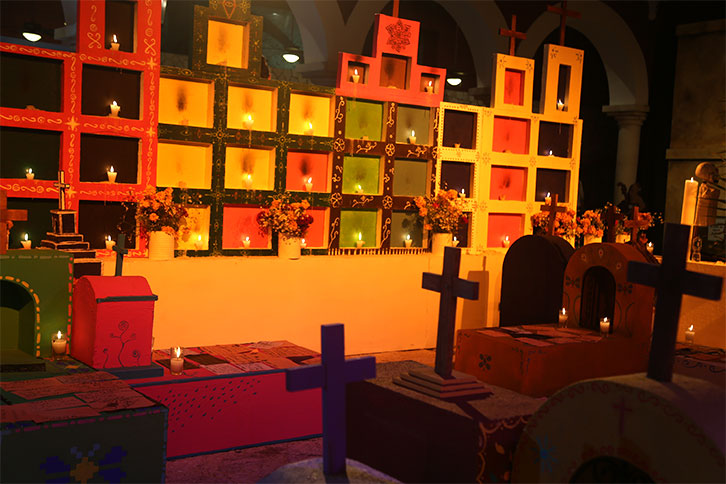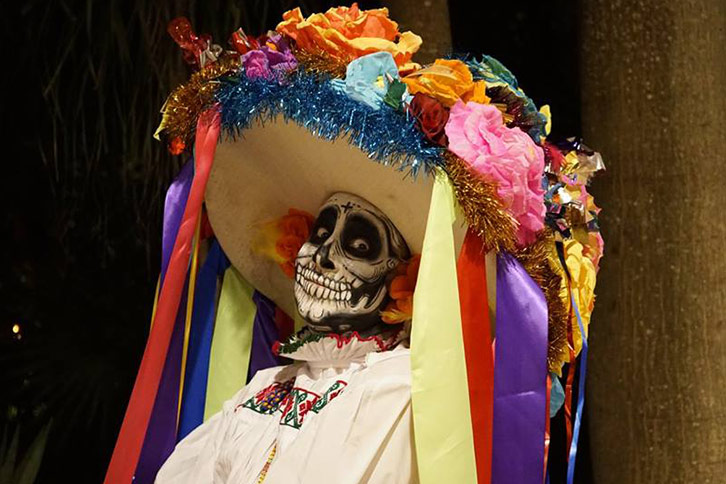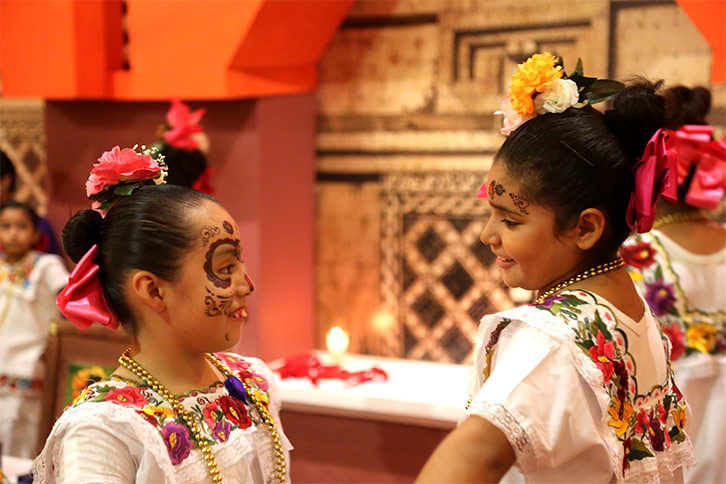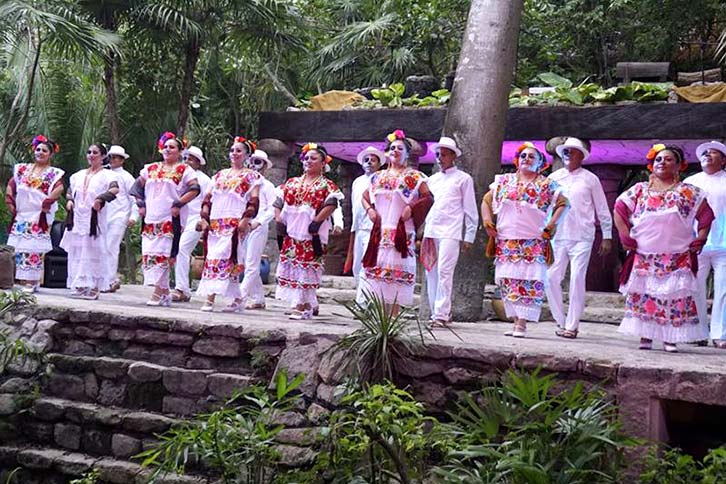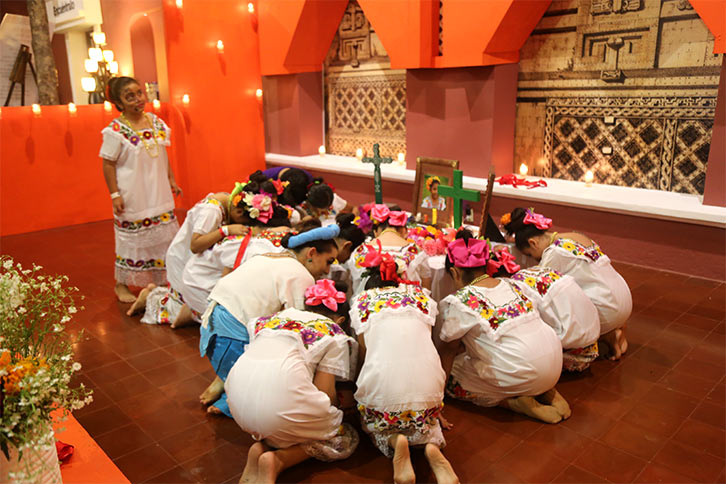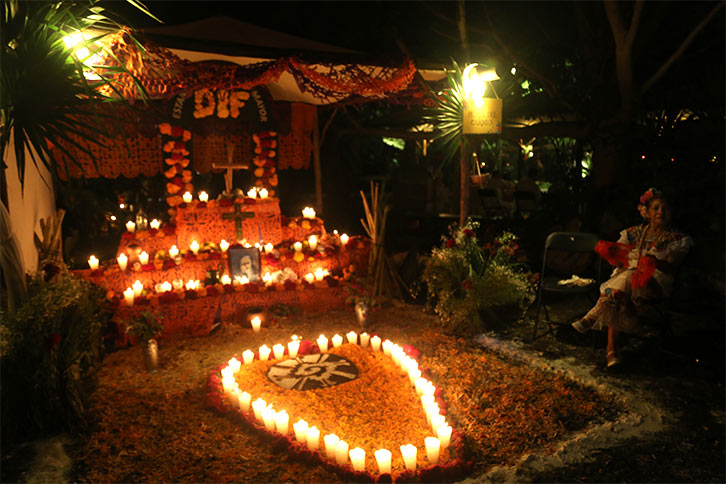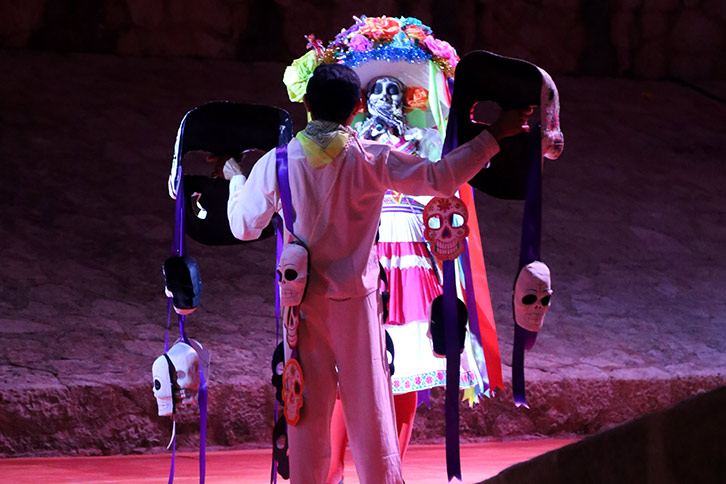Day of the Dead in Mexico is a deeply rooted tradition that spans generations. The holiday is a heartfelt tribute and re-encounter with the deceased, a celebration of their being and the lives they lived. While the traditional Day of the Dead celebrations are famous in Patzcuaro, Michoacan, there’s another globally renowned celebration right in Playa del Carmen. Nowhere else in Mexico will you find such a beautiful and elaborate tribute to this identity-weaving holiday than at Xcaret Park in Mexico’s Riviera Maya. If you purchase a regular ticket to Xcaret from October 30th to November 2nd, you can experience its Festival of Life and Death. It’s an otherworldly Day of the Dead encounter you won’t want to miss. So come experience it if you’re vacationing in the Riviera Maya and looking for things to do around those dates!
To die is to swim through the world
Without having to come out to breathe
—Mexican rock band Kinky
Day of the Dead: A Pre-Columbian Tradition
The ritual of celebrating the deceased dates back thousands of years in Mexico. Many indigenous cultures, particularly those in central and southern Mexico, had some form of ritual to celebrate the departed. Similarly, the Aztecs celebrated the dead with a month-long ritual dedicated to Mictecacihuatl, queen of Mictlan — the underworld.
Over time, as the identity of Mexico became irrevocably altered through the Spanish invasion and subsequent fusion of cultures, Mictecacihuatl became the now-famous La Calaca Catrina. Consequently, the modern Day of the Dead celebration took form through the mixing of pre-Columbian and Spanish traditions. Today, the holiday starts on November 1st to remember the children who have left this world as we know it, and ends on November 2nd, when the adults return to partake in a tribute in their name. These dates coincide with the Christian celebrations of All Saints’ Day and All Souls’ Day, respectively.
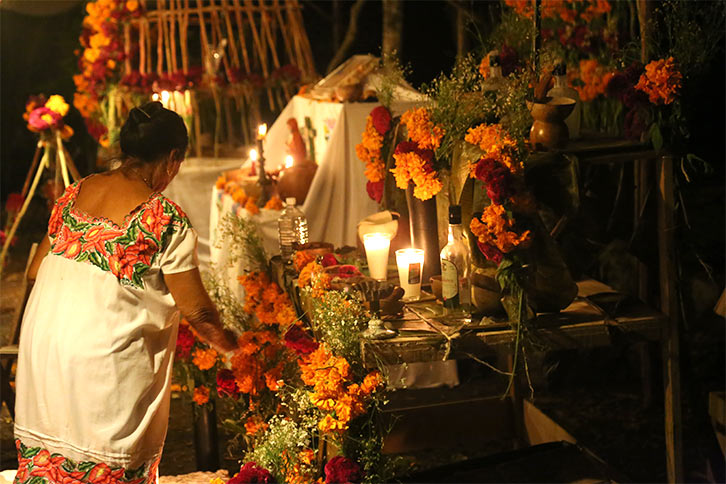
An Altar to the Departed – Traditional Part of the Festival of Life and Death at Xcaret
Altars are an important part of the Day of the Dead ceremony in Mexico and have deep meaning for those who lovingly create these tributes to their deceased loved ones. An ofrenda — or offering to the departed —is an integral part of Day of the Dead altars, especially at Xcaret Park. They usually include candles, incense such as copal, flowers, and paper decorations. Furthermore, no altar would be complete without the favorite food and drinks of the deceased. The center of the altar prominently displays the image of a deceased loved one.
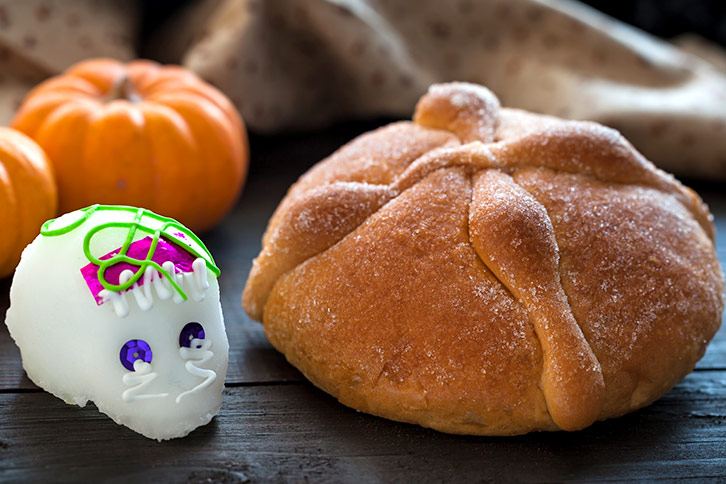

Food to Honor the Deceased
In addition, altars include healthy portions of delicacies such as tamales, chile relleno and, of course, tequila — along with a cigarette or two for the smokers. Above all, one essential aspect of the Day of the Dead ritual involves a special bread called pan de muertos or Bread of the Dead. Like Day of the Dead itself, the tradition of pan de muertos goes back to pre-Columbian cultures. Because the natives made human sacrifices to the gods, their cultural fusion with Spanish cultures caused the bread to represent human hearts. And if you take a closer look at that bread, you might even notice that the round part could be a skull. While the round shape also represents the circle of life and death., the four crossed raised lines symbolize the hand and feet of the deceased.
Of Skeletons and Skulls
Another aspect of Day of the Dead is the presence of numerous skeletons — essential to the identity of the celebration itself. Especially relevant, elaborately decorated sugar skulls can be seen at almost every market and store in Mexico. The skulls, known as calaveras, are an important symbol of Day of the Dead. Like pan de muertos, they’re derived from a pre-Columbian tradition fused with the practice and beliefs of the Spanish invaders. To be precise, the Spanish process of forming sugar cane into edible shapes is blended with the indigenous beliefs and their skilled skull art. Thus, the two cultures created a proud tradition for modern-day Mexico.
Likewise, the calacas or skeletons date back centuries to the practice of Aztec imagery. Their use of skeletons as living representations of death and afterlife was fundamental to their culture. But rather than commemorating the sad and tragic side of death, the skeletons today are generally joyous figures. They display festive colors as they dance, sing, strut, or play musical instruments.
Of all the calacas in Mexico, none is more famous than Catrina. The concept of Catrina was born of the famous Mexican illustrator Jose Guadalupe Posada. He developed the image of an aristocratic skeleton in an European-style outfit. This was to mock the Mexicans who self-identified more with Europe. Today, Catrina is an icon of not only Day of the Dead but of Mexico’s national identity.
Day of the Dead at Xcaret Park – El Dia de los Muertos
While people observe Day of the Dead throughout Mexico, Xcaret’s celebration in the Riviera Maya truly stands out. Few places offer such a unique and privileged view of the customs and traditions that make up this very Mexican holiday. Each year, Xcaret organizes its Festival of Life and Death, a captivating tribute to Day of the Dead through music, dance, face painting, history, food and theater. It takes place at the eco-park from October 30th to November 2nd.
Day of the Dead Festivities for the Whole Family at Xcaret
Most noteworthy, the entire concept of the Festival of Life and Death is perfect for all age groups. Like in previous festivals, the 2018 Day of the Dead tribute will feature a number of activities for the whole family in Riviera Maya. Consequently, you’ll find activities like face painting, theater, and music for young and old alike. And there will be something for those looking for authentic expressions of Mexican cuisine. A number of local communities will have food stands at the four-day event. They’ll have the opportunity to earn extra income through the sales of delicious Day of the Dead culinary specialties.
In fact, the Festival of Life and Death has proven very successful because of its wide-ranging culinary and cultural offerings. In 2018, Xcaret will celebrate 13 years of bringing the intricacies and beauty of Mexican culture to a wider audience. So to commemorate this important event, Xcaret invited acclaimed Mexican singers Ely Guerra and Eugenia Leon to perform. This promises to be the most spectacular Festival of Life and Death to date! In addition, the Mexican state of Zacatecas will be the invited entity of honor. You can take a look at the Festival of Life and Death program here.
Live El Día de los Muertos at Xcaret During Your Riviera Maya Vacation!
So are you ready for Xcaret’s Festival of Life and Death? Please let us know if you have any questions or need special arrangements for this amazing festivity. We’ll be happy to assist you in any way.
Finally, we’ll also be glad to arrange your transfer from Cancun Airport to your Riviera Maya resort. This way, you’ll start out your vacation hassle-free as soon as you leave the airport. We can’t wait to make your Riviera Maya vacation come alive during the Day of the Dead at Xcaret!
—This is an update of the original September 2015 post.

